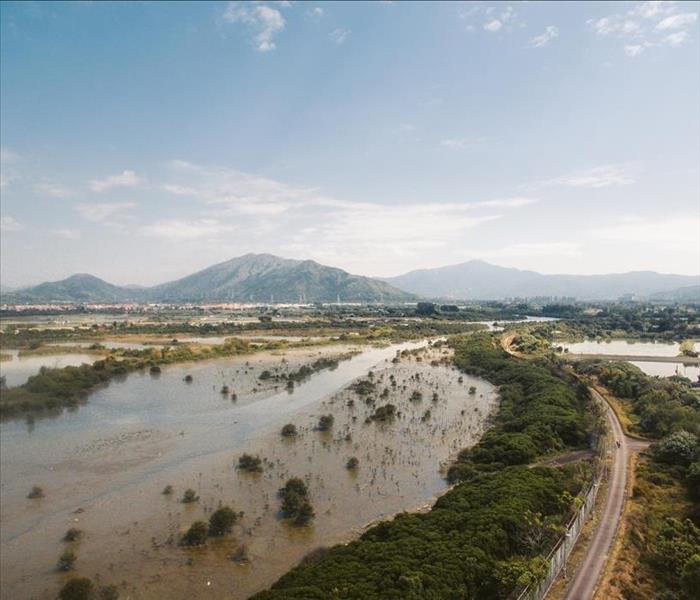Flash Floods: Know Your Risk
6/24/2020 (Permalink)
 In order to protect your home, it is of the utmost importance that you know the risk of flash flooding in your area.
In order to protect your home, it is of the utmost importance that you know the risk of flash flooding in your area.
In just minutes, summer rain showers can become dangerous. In flash floods, water builds rapidly, pathing a path of destruction in its wake, demolishing bridges, buildings, and homes. While it can occur at any time during the year, flash flooding is common during the summer due to the higher humidity and slower jet stream. In the United States, flooding is the second deadliest weather-related event and claims an average of 81 lives per year according to NOAA. In comparison with general flooding, flash flooding can be more dangerous, as it contains the same intense force of flood water, but develops and moves quickly. In order to protect your home from the dangers of flash flooding, it is highly beneficial to understand its origins.
Causes of Flash Flooding
The jet stream, which greatly affects weather patterns throughout the year, slows during the summer season. Subsequently, summer storms have a tendency to linger over one area for a long time, which leads to a large amount of rain falling over one area. This heavy rainfall can increase the likelihood of a flash flood developing. Overall, flash flooding requires two conditions, long duration and high intensity of rainfall. These conditions are met in several storm scenarios, such as severe storms (hurricanes or tropical storms) and slow-moving thunderstorms. Another element that affects flash flooding is topography, or the physical features of an area. The risk of flash flooding is higher in areas located in close proximity to rivers, streams, and other bodies of water. Though it may come as a surprise, urban areas are also prone to flooding and flash floods due to the prominence of concrete and subsequent lack of soil into which rainwater can be absorbed.
Know Your Risk
Oftentimes, early warning cannot be given when it comes to flash floods because they develop so quickly. The lack of sufficient warning can increase the chances of your home undergoing water damage or even structural damage as a result of flash flooding. In order to protect your home, it is of the utmost importance that you know the risk of flash flooding in your area. Be sure to stay alert when storms are in the forecast and put together an emergency flood kit if you live in an area that is at an increased risk. However, if a flash flood catches you by surprise and wreaks havoc on your home, know that SERVPRO has you covered.





 24/7 Emergency Service
24/7 Emergency Service